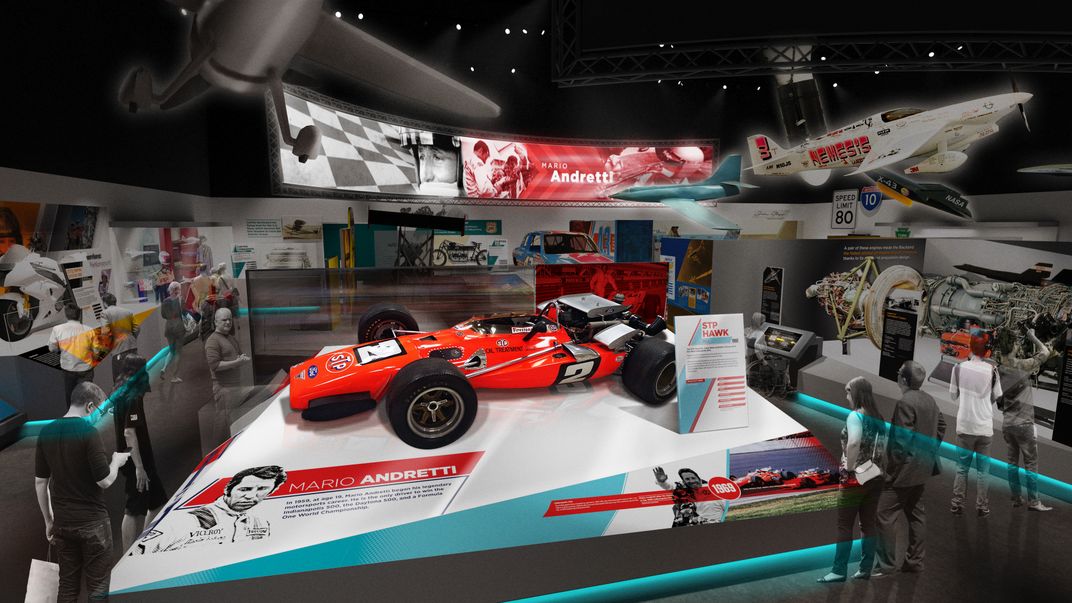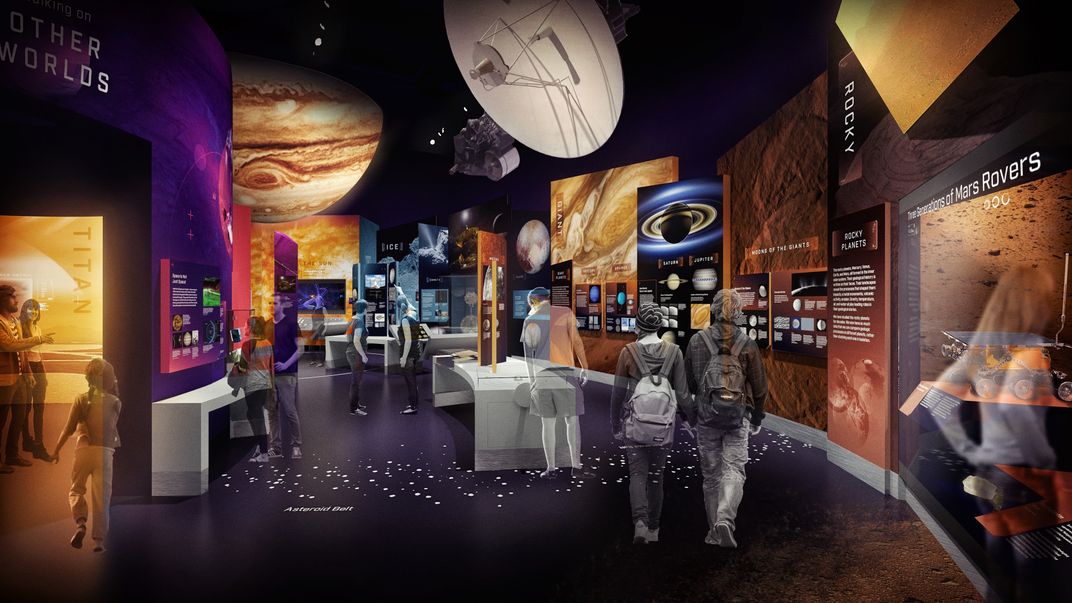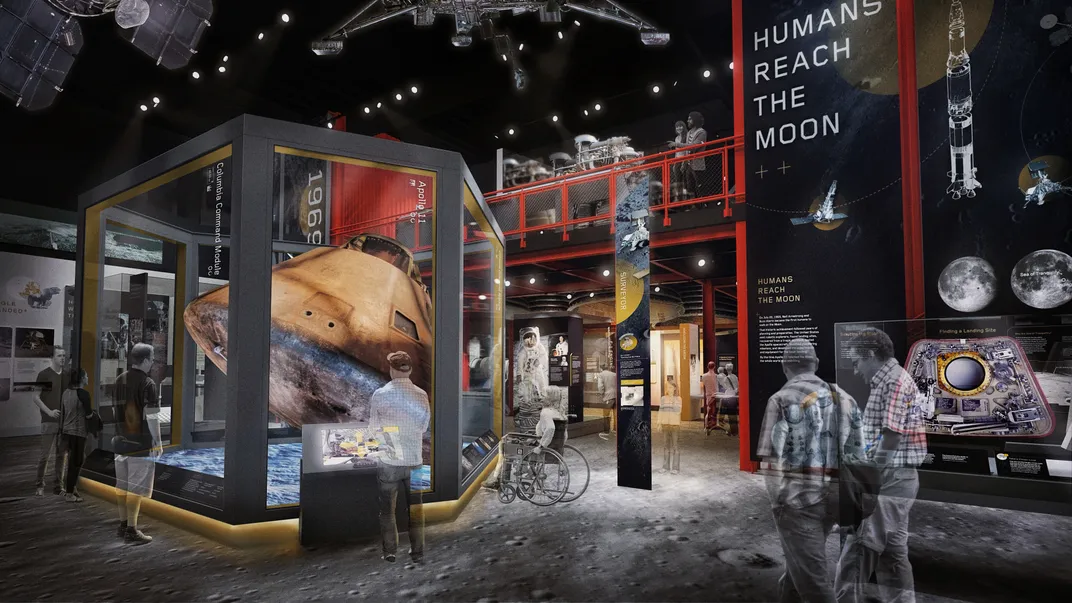Here’s Why Washington’s Beloved Air and Space Museum Is Facing a Sweeping Seven-Year Upgrade
The museum will remain open as it works to enhance the visitor’s experience
/https://tf-cmsv2-smithsonianmag-media.s3.amazonaws.com/filer/e0/c1/e0c1efcf-c706-4cc2-a01b-8ec08e18ce7d/aas1.png)
Opened on the National Mall in 1976, the Smithsonian's National Air and Space Museum in Washington, D.C. has for more than 40 years reminded visitors of the heights to which the human imagination can soar. From 19th-century gliders to state-of-the-art fighter jets, from compact communications satellites to imposing rocket engines, the museum’s inventory speaks to the ability of innovators American and otherwise to break both physical and conceptual barriers.
The quiet majesty of the museum’s collection has long been a draw to D.C. visitors of all stripes. Lately, the museum has welcomed between 7 and 8 million guests annually, making it the most popular museum in the United States and among the most popular worldwide, on a par with the Louvre in Paris.
Given its four decades of life and enduring heavy traffic, it comes as little surprise that the museum is now in need of major renovations. Acting on severe structural degradation as well as a desire to breathe fresh life into its air and space exhibitions, the Smithsonian has announced that a sweeping, seven-year upgrade will commence this coming summer.
Happily, many of the museum’s signature artifacts—including Charles Lindbergh’s Spirit of St. Louis and the Wright brothers' pioneering biplane—will remain on view; only half of the space will be inaccessible at any given moment.

The genesis of the overhaul was a survey of the museum’s timeworn heat, ventilation and air conditioning (HVAC) system. Initially, the museum expected to launch a relatively modest infrastructure refurbishment campaign. But what the HVAC inspectors uncovered made it clear that across-the-board improvements were required.
The assessment revealed that “the exterior cladding of the building—the marble façade—was warping and cracking, compromising the integrity” of the whole structure.
Christopher Browne, deputy director of the museum, notes ruefully that many of the decisions made back in the 1970s vis-à-vis its design suggest an inclination toward “value engineering.” And when affordability is prized over longevity, issues down the road are inevitable.
The team responsible for the original design opted for stone slabs a mere 1.5 inches in thickness rather than a pricier but more prudent 3 inches. As a result, weathering has opened breaches significant enough to allow outside air into the plenum at the heart of the museum’s ventilation network, throwing humidity and temperature regulation out of whack. Additionally, falling hunks of marble pose a direct safety hazard to visitors below, a hazard which has been dealt with in the short term by the installation of covered walkways.
Replacing the façade is no trivial matter—it will necessitate that large swaths of the museum’s cavernous interior be exposed to the open air. Since this alone will demand massive closures, museum leadership decided to seize on the opportunity and overhaul all 23 exhibition spaces while they are at it. Rather than shut down the entire building for years on end, though, they thought it best to ensure that it would never be more than half-closed.

For one, leaving the building open and spending more time on the project is about half as costly as the alternative: the gradual renovation will require $1 billion in federal funding and donations, whereas the total closure scenario would have run closer to $2 billion. A related selling point is that this choice simplifies the logistics of shuffling artifacts around. If the whole building were being upgraded at once, its vast inventory would have to be moved off-site. The planned arrangement allows for homeless objects to be housed in whichever wing is accessible.
Perhaps most important, though, is the desire to leave the museum open for those who may not have the privilege of visiting whenever they please. “A lot of people come to Washington once in their life,” Browne says. “They’ve got one trip on the Mall, and we want to make sure we can provide them with an experience. Granted, it won’t be the full museum, but certainly the half of the museum that will remain open at any given time will showcase some of our most iconic artifacts.”
Meanwhile, existing gallery spaces will gradually receive all sorts of enhancements. In addition to baseline aesthetic modernization, the renovations will update galleries with current-generation interactive technology—making visitors feel like explorers, and involving them more intimately in the history they’re learning about.
The Exploring the Planets exhibition, a fan favorite, will be incorporating a breathtaking interactive element, allowing museumgoers to journey from world to world at their own pace. “In the new gallery,” says the museum's chief curator Peter Jakab, “you’ll approach our own solar system as if you were from another solar system, and coming and discovering it that way.” Similarly participatory smartphone software, now in development, will allow patrons to investigate digitized versions of artifacts like the Wright brothers' Flyer in a no-holds-barred virtual reality environment.

Some galleries will wind up essentially brand-new. An immersive exhibition called "Destination Moon" promises to engage viewers fully in a rich history of lunar aspirations beyond the bounds of the Apollo program, and a fresh showcase of aviation in World War II will provide a comprehensive look at the technology behind one of humankind’s deadliest conflicts.
With all the renovated exhibitions, Jakab and his colleagues are aiming to foster a feeling of interconnectivity, both among the various artifacts and among the museumgoers viewing them. “You can envision a situation where you have visitors who are in the physical museum engaging on social media with people who are elsewhere in the world,” he says, “and sharing their experiences and their insights.” As a reservoir of knowledge, the museum has the potential to be much more than a physical destination. “The idea is no longer to think of the museum as a place,” Jakab says, “but as an experience”—an experience that can be readily distributed with the help of modern technology.
Curious young people have always been a key target demographic for the museum, and going forward, deputy director Browne says that the museum will be doubling down on educational outreach programs such as its successful “STEM in 30” video series, and continuing to take to heart the needs and wants of middle school-age visitors as it redesigns its galleries.
More than anything, Browne hopes that the sheer wonder of the museum can be preserved as it moves into the future. “I remember coming into the building shortly after it opened in 1977,” he says, “and it was really jaw-dropping. Just, ‘Oh, my gosh! Look at this stuff hanging from the ceiling!’” In his view, this “wow factor” is at the very core of the museum’s mission, and what makes its exhibitions so moving and memorable. “What I want and hope we’re able to do,” he says, “is continue that with new generations of visitors, who may be defining ‘wow’ in a different type of way.”
/https://tf-cmsv2-smithsonianmag-media.s3.amazonaws.com/accounts/headshot/DSC_02399_copy.jpg)
/https://tf-cmsv2-smithsonianmag-media.s3.amazonaws.com/accounts/headshot/DSC_02399_copy.jpg)